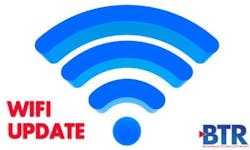Beefing Up WiFi
The next-gen WiFi standard, 802.11ac carries the punch needed to fulfill the wireless promise of helping cable operators bolster reach, flexibility and fluidity of viewing among devices inside a consumer's home.The improved throughput, range and coverage of 5G WiFi are expected to eliminate deadspots in the home and allow viewers to wirelessly access HD content or stream video from any room. Additionally, operators will have another way to enable multi-room DVR, gaming and OTT services, said Dino Bekis, senior director, product marketing, wireless connectivity combo, Broadcom (NASDAQ:BRCM). His company recently announced one of the first products based on 802.11ac - a 5G WiFi wireless IPTV set-top box platform.In addition to these potential consumer benefits, 5G WiFi could bring other pluses to the table. Wired broadband networks will be pushed to their "absolute limits" over the next several years due to a change in viewing patterns and an overall increase in consumption, according to a recent study by Bell Labs, the research arm of Alcatel-Lucent (Euronext Paris, NYSE:ALU).Specifically, the report indicates that consumers in the United States will access an average of 7 hours of video each day by 2020, compared to 4.8 hours today, and this viewing increasingly will be done on handheld devices. Additionally, there will be a shift from broadcast to VOD services, with the latter representing 70% of daily consumption, compared to 33% today.5G WiFi could help remove some of this network burden, according to Broadcom Connected, the company's official blog.Additionally, 802.11ac allows the service provider to operate one WiFi network for both video and data, when previously they had to be segregated, Bekis said. The increased throughput allows content to be transmitted quicker, which translates to increased battery life for mobile devices being used to watch or access this content in the home.Service providers in the wireless business have wanted to offload traffic from their LTE networks, but previously, WiFi would have been good from a network investment standpoint, but bad for consumer device battery consumption. With 802.11ac,WiFi power usage is reduced to the extent that this will no longer be the case, Bekis said. "They can achieve the desire of offloading to a WiFi network when there is congestion ... and solve an ancillary problem with mobile phone consumer's expectations for battery life."Monta Monaco Hernon is a free-lance writer. She can be reached at [email protected].
